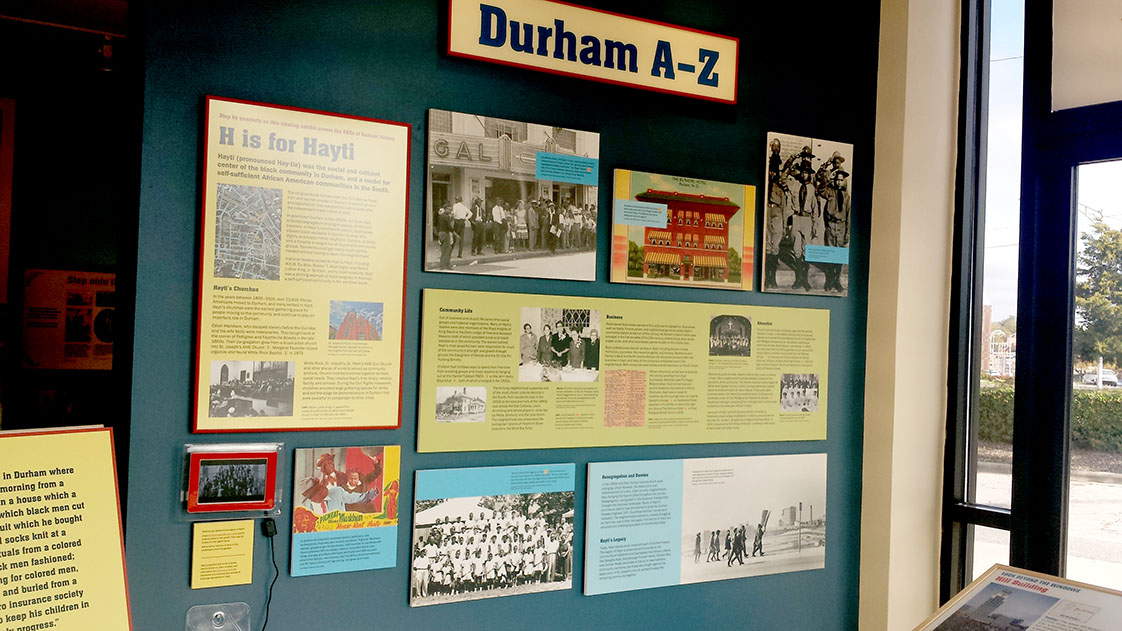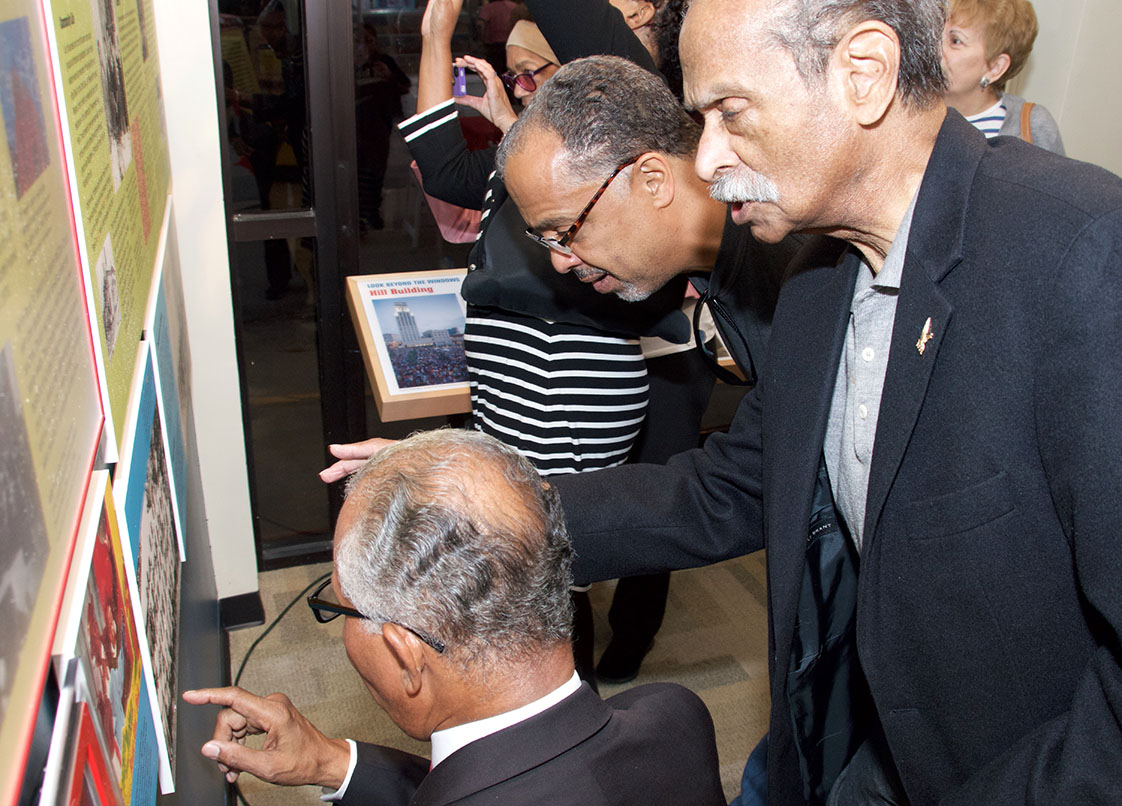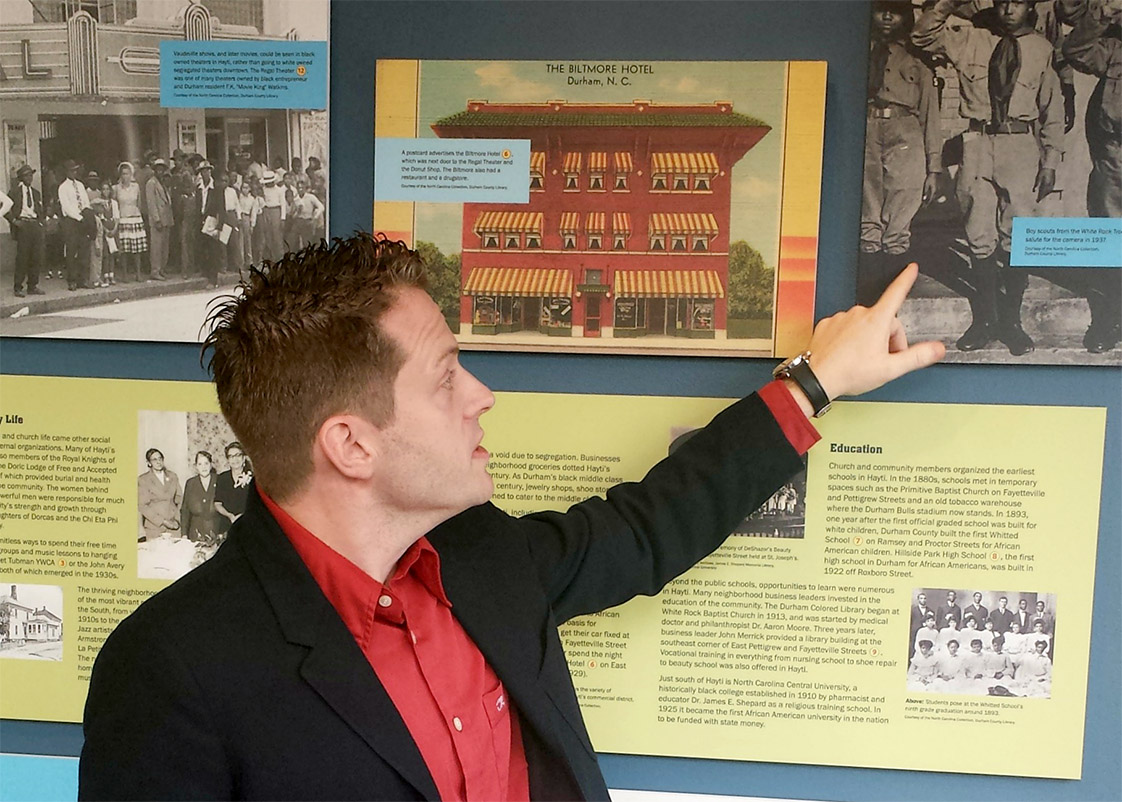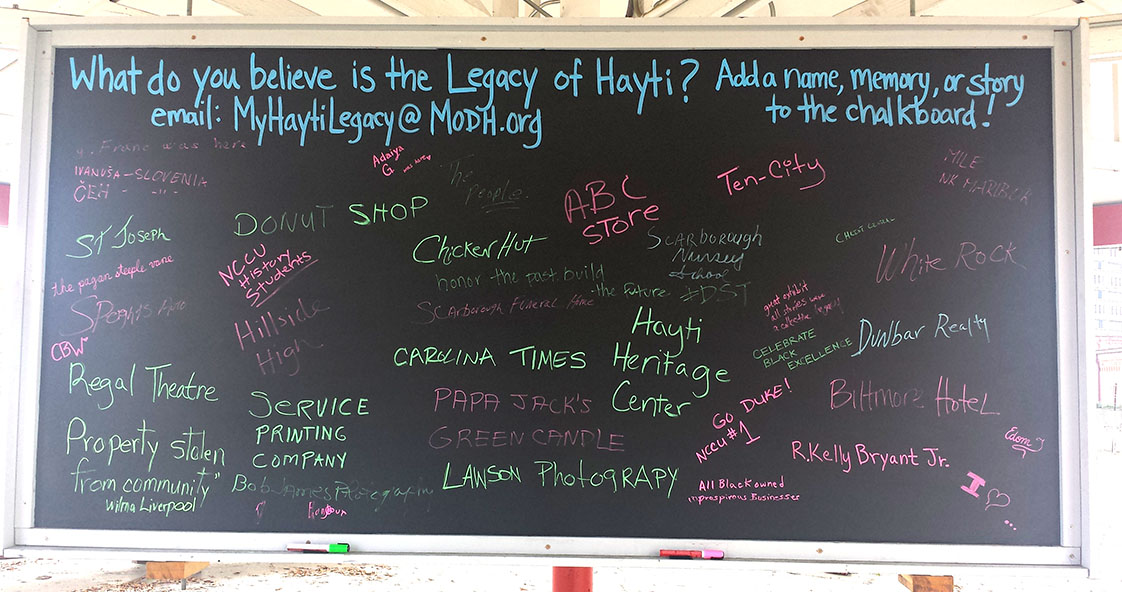
The Durham A-Z exhibits looks into different parts of Durham history. This time, the wall features photographs and information about Hayti. (Staff photo by Palak Patel)
‘H’ is for Hayti.
Hayti was the cultural and social center for the African-American community that developed after the civil war. Now, the Durham History Hub provides a glimpse into Hayti, as well as other aspects of Durham History through their latest exhibit.
“Durham A-Z” provides a look into local history starting with the letter ‘A.’ The hub, which is located in the heart of Durham at 500 W. Main St, is dedicated to providing an overview of history through photographs and interactive programs. The Hayti exhibit includes information, pictures, and online resources.

Visitors to the exhibit’s grand opening try to find themselves in photographs of Hayti. Many members of Hayti still reside in Durham. (Photo courtesy of Brand Fortner, Museum of Durham History)
HISTORY
“It was a whole community developed around African-Americans by and for African-Americans,” said Patrick Mucklow, director of operations.
Mucklow describes Hayti as a vibrant neighborhood full of businesses, community centers, schools, churches and other key aspects of a city, all run by African Americans and fueled by segregation laws.
The Hayti District was named after the country of Haiti, the first independent black republic. Former slaves and members of the African-American community established the neighborhood with the purchase of businesses and homes. Between 1860 and 1910, over 12,000 African-Americans moved to Hayti, now Durham. During its life, Hayti was visited by numerous historical figures, such as W.E.B. DuBois and Martin Luther King Jr. Between 1860 and 1910, over 12,000 African Americans moved to Hayti.
According to Mucklow, the neighborhood thrived until the 1960’s, when N.C. Highway 147 (the Durham Freeway) was built through and integration laws came into place.
COMMUNITY
Hayti was known for its community— churches, businesses, schools, and community centers.
“There was a Boy Scouts of America branch for African-Americans and there were country clubs for members of the Hayti middle and upper class,” said Mucklow.
The development of these community centers attributed to Hayti’s success, according to Mucklow.
Hayti also had numerous churches that served as “community anchors,” where residents could come and work on social issues. Churches also served as gathering places for rallies and meetings during the Civil Rights Movement.
Hayti was home to several notable people including professional athletes and musicians, such as Tracy McGrady and John P. Kee.

Patrick Mucklow, director of operations at the hub, points to a noteworthy photograph of the Boy Scouts of America established in Hayti. Due to segregation, African Americans were not allowed to join the scouts and thus, created their own. (Staff photo by Palak Patel)
HAYTI LIVES ON
On Oct. 16, the Durham History Hub hosted a grand opening to celebrate Hayti and invite former Hayti residents to reminisce about the neighborhood.
“It was really interesting to see everyone reacting to the pictures we have in our exhibit,” said Katie Spencer, executive director.
Members young and old of the community were able to share their stories, catch up with old friends, and provide insight into their experience with Hayti.
“You would see people pointing themselves out in pictures or talking about what they used to do in Hayti, and that was really cool to see,” said Spencer.
Hayti’s legacy lives on even to this day. Outside of the hub, there is a chalkboard where Durham residents are invited to write down their memories of Hayti. While some remember notable neighborhood features, such as St. Joseph’s African Methodist Episcopal Church, younger residents remember places such as the Hayti Heritage Center.
“We encourage people to leave their impressions and memories of Hayti,” said Mucklow. “It depends on when you grew up, but most people in Durham have some memory of Hayti and it really brings the community together.”
Mucklow encourages visitors to the museum to set out on foot and see the different aspects of Hayti in person, as many of the notable places still exist today.
“We like to give an experience that allows visitors to step ‘outside the walls’ of the hub and really see Durham’s rich history.”
